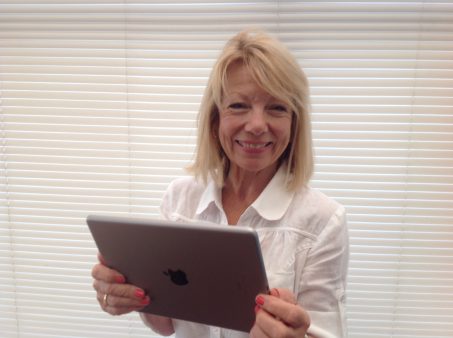Guest post: Linda Hazzard – Living with Chronic Lymphocytic Leukaemia (CLL)
8 November 2018
Linda Hazzard won the ‘People’s Choice’ Social Media Competition at Cardiff’s 20th Innovation and Impact Awards earlier this year.
A former local government employee from Weston-Super-Mare, Linda voted for Cardiff University spinout TeloNostiX, crowned ‘People’s Choice’ thanks to overwhelming public support.
The company has developed a tool that helps clinicians and patients understand the likely need for treatment and the most appropriate course.
Here, Linda talks about her own personal journey – living with Chronic Lymphocytic Leukaemia – and her faith in clinical innovation.
I heard about the Innovation and Impact Awards in the Chronic Lymphocytic Leukaemia Support Association (CLLSA) online community that I belong to, part of the HealthUnlocked website.
One of our administrators posted information about the Awards and our chance to vote for this amazing project. I don’t have any links with the university, apart from I know a couple of people who studied there, but I felt driven to support TeloNostiX.
The CLLSA community has been an invaluable source of information and support for me since discovering it a few years ago, and I only wish I had known about it sooner.
I was diagnosed with CLL early in January 2011, at which point I had never even heard of this type of cancer.
There followed a very frightening time. I was told I had an incurable form of Non-Hodgkin’s Lymphoma. I was also told the treatment would consist of chemotherapy, which would buy some remission time, and possibly a stem cell transplant, which is drastic but could almost be considered a cure and could be suitable for me as I was still relatively young and healthy for this type of disease (I was 56 at the time).
I assumed treatment would start as soon as possible, which is the norm for other types of cancer. But I learned that this is not the case with CLL, as early treatment was not considered beneficial as it uses up the limited treatment options too soon.
The haematologist said that they had no way of knowing when I would need to start treatment, as disease progression is different for each person. Some people die with the disease rather than from it.
So I was put on ‘Watch and Wait,’ with three-monthly haematology appointments to monitor my blood and lymph nodes. I also had a bone marrow biopsy to find out bone marrow infiltration.
After a few years of three-monthly appointments, it was noted that the disease progression had slowed somewhat, so I was changed to six-monthly appointments, and now for the last couple of years I am on 12-monthly visits, which is great.
But at the end of every appointment, the consultant always says: ‘if anything changes (enlarged lymph nodes, night sweats, unintentional weight loss, etc) please get back to us straight away, don’t wait until your next scheduled appointment.’
So, even though I am a very positive and happy person, there is this worry lurking in the back of my mind that the disease could ramp up at any time.
In the early, worrying days after my diagnosis, I felt that I had to make some important decisions about my lifestyle, including my work, to hopefully improve my chances of surviving longer.
I Googled a lot, particularly about life expectancy, which I now understand everyone does. It made for scary reading. So back then I never envisaged being in relatively good health, seven years later! I believe that the lifestyle changes I made have probably helped me.
But everything would have been so, so much better if I could have been given more accurate information about my prognosis right at the start – as the TeloNostiX project seems to be able to offer in the future.
The test can forecast the outcome of certain treatments for common cancer types like breast cancer and Chronic Lymphocytic Leukaemia (CLL). It is based on analysing the length of telomeres – caps found at the ends of chromosomes that protect genetic information from damage.
If I could have possibly known that at the time, then I needn’t have worried for at least seven years. So I was delighted to see TeloNostiX had won the ‘People’s Choice,’ and delighted that I won a prize too in the social media competition. The publicity really highlights the important work being done at Cardiff University to make people’s lives better in future.